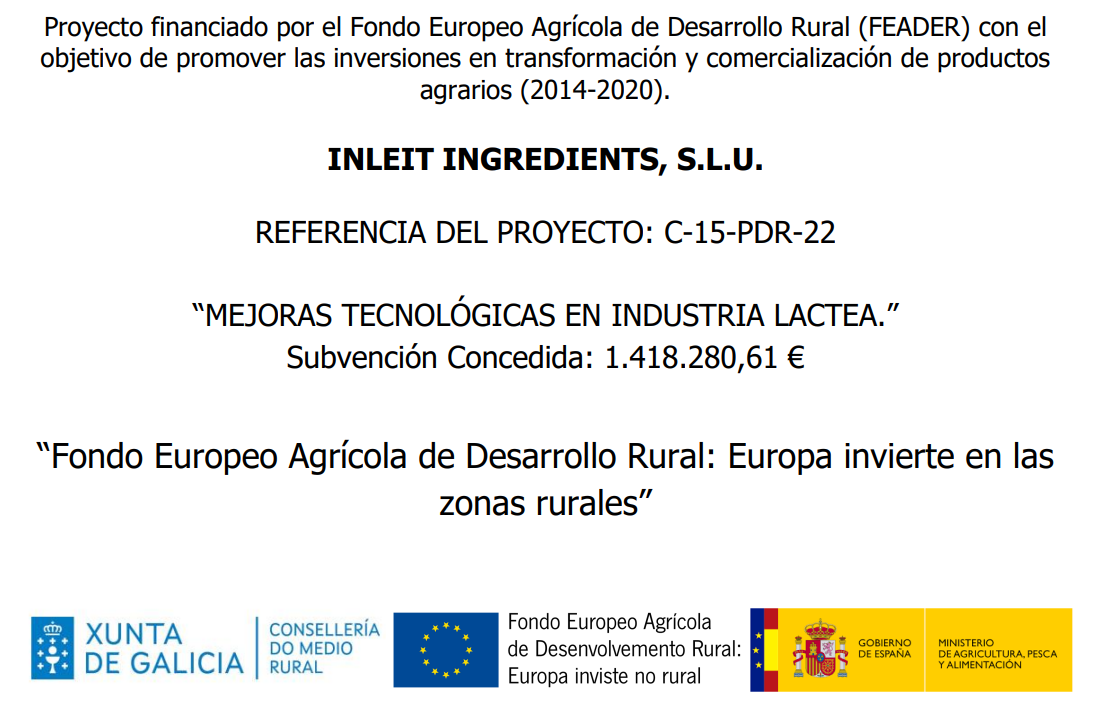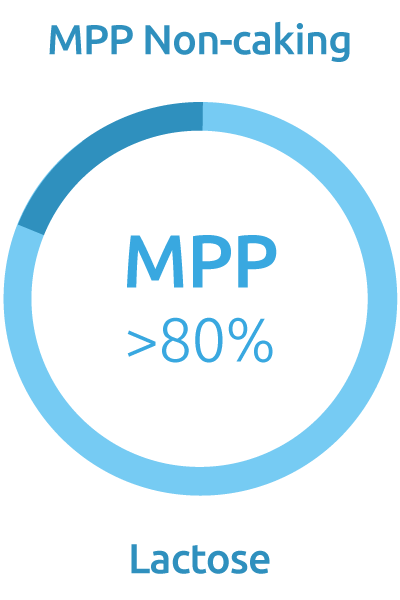An estimated 65% of the worldwide population has lactose intolerance1. The condition is caused by a deficiency in the enzyme lactase, essential for the digestion of lactose, the natural sugar found in milk and dairy products. A person who is intolerant to lactose can usually digest 5-10 grams of lactose distributed throughout the day2. Lactose intolerance, yogurt, and dairy consumption are discussed scientifically in this article.
Lactase activity is what determines lactose intolerance
It’s possible to detect fetal intestinal lactase activity at 8 weeks, increasing significantly between weeks 24 and 401,3-4. In addition, lactase activity rises rapidly after the first breastfeeding, achieving over 98% efficiency within 5 days4.
Lactase activity typically decreases progressively after 1 year of age. While some populations retain lactase activity at this age, others lose it completely1,3,5. A global estimate of 35% of the adult population has lactase persistence, with substantial variation depending on dietary culture, with up to 90% persisting in Nordic populations versus 10% in South-East Asia1,3.
A digestive system relies on lactase activity to absorb lactose. Lactose – the natural sugar of milk and dairy products – is a disaccharide composed of galactose and glucose monosaccharides. Lack of lactase results in lactose not being split in the small intestine. As a result, it will reach the colon and be fermented by the bacteria there6.
Lactase deficiency occurs in various forms
Thus, lactose intolerance occurs when lactase is not functioning correctly. Depending on the cause, lactose deficiency may be classified as primary, secondary, or congenital2.
Primary lactose intolerance
Children’s lactase production normally drops after they stop drinking milk, but it usually remains high enough to digest dairy in a typical adult diet7.
Primary lactose intolerance occurs when lactase production drops dramatically in adulthood, making milk difficult to digest. In the colon, lactose that is not absorbed in the small intestine is fermented by bacteria. As a result, the organism can be exposed to healthy bacteria, which produce beneficial substances, or to unhealthy bacteria, which produce gases, such as hydrogen, carbon dioxide, and methane, causing diarrhea, flatulence, pain, and cramping5-7
Secondary lactose intolerance
The intestinal mucosa is damaged during this form of lactose intolerance, thus decreasing lactase production. Various causes can lead to this damage, including:
• Infections that may cause gastroenteritis, such as those caused by radiotherapy or intestinal surgery, the celiac disease being untreated, Giardia lamblia, or rotavirus gastroenteritis.
• An overgrowth of bacteria after a small intestine resection or stenosis.
• Nutritional deficiency.
• The damage done to the intestinal mucosa by medications (such as antibiotics) or alcohol.
Treatment of the underlying disorder might improve symptoms and restore lactase levels1,3,5-6.
Rare hereditary form
It’s possible, but rare, for babies to be born with lactose intolerance caused by a lack of lactase. This disorder is hereditary and autosomal recessive, meaning that both the mother and the father must pass on the same gene variant for a child to be affected5-6
In children who have digestive issues, breastfeeding should be continued whenever possible. Most breastfed babies with lactose intolerance can still breastfeed. Otherwise, the paediatrician can suggest to the parents various lactose-free infant formulas. Reducing or eliminating lactose can be done with other foods containing similar calories, proteins, minerals, and vitamins. Prebiotics, probiotics, symbiotics, and postbiotics can also be added to infant formula to ensure a healthy intestinal environment8.
In the adulthood, in general people do not need to stop consuming dairy products because many can tolerate 5-10 grams of lactose at a time, which is approximately 100-200 mL of milk2. Besides, many dairy products like yogurt and cheese can be tolerated because of their low content in lactose.
Yogurt, for example, can be “lactose intolerant-friendly” because during the fermentation of yogurt the lactose is broken down, so easier to digest. Besides, the live and active cultures found in yogurt, known as probiotics, also help digesting the remaining lactose. Consuming probiotics on a daily basis benefits the digestion process.
Additionally, due to its density, yogurt delays gastric emptying and intestinal transit, causing a slower, gradual absorption of lactose in the intestine9.
Cheese can also be considered as a low-lactose food option. Certain types of cheeses, especially soft or creamy ones like feta and cream cheese are higher in lactose. Unlike the aged and hard cheeses like cheddar and parmesan which contains less lactose. Besides, cheese tend to be easier digested when eaten in small amounts and/or combined with other foods at a meal.
So prior to eliminating milk and dairy products, it is first necessary to determine whether a person is lactose intolerant, and to which extend. In fact, as a natural product, milk and dairy products contains various essentials nutrients including proteins, calcium, and such vitamins like B2 and B1211.
References
- Romero-Velarde E. et al. 2019 Nutrients;11(11):2737. doi:10.3390/nu11112737
- Ugidos-Rodríguez et al. 2018 Food Funct.;9(8):4056-4068. doi:10.1039/c8fo00555a
- Forsgård RA. 2019 Am J Clin Nutr;110(2):273-279. doi:10.1093/ajcn/nqz104
- Lenfestey MW and Neu J. 2018 Gastroenterol Clin North Am;47(4):773-791 doi:10.1016/j.gtc.2018.07.005
- Szilagyi A and Ishayek N. 2018 Nutrients;10(12):1994. doi:10.3390/nu10121994
- Di Costanzo M and Berni Canani R. 2018 Ann Nutr Metab;73 Suppl 4:30-37. doi:10.1159/000493669
- Misselwitz B. et al. 2019 Gut.;68(11):2080-2091. doi:10.1136/gutjnl-2019-318404
- Savaiano D.A. et al. 2013 Nutr J.;12:160. doi:10.1186/1475-2891-12-160
- Savaiano D.A. 2014 Am J Clin Nutr.;99(5 Suppl):1251S-5S. doi:10.3945/ajcn.113.073023
- Toca M.D.C. et al. 2022 Arch Argent Pediatr.;120(1):59-66. doi:10.5546/aap.2022.eng.59
- EFSA Panel on Dietetic Products, Nutrition and Allergies (NDA). 2010 Efsa Journal9: 1777.














